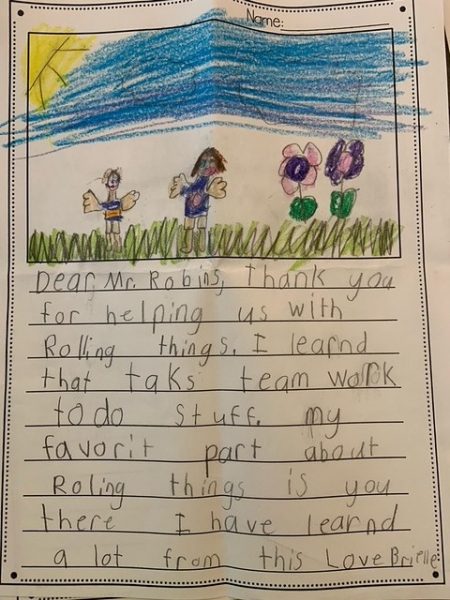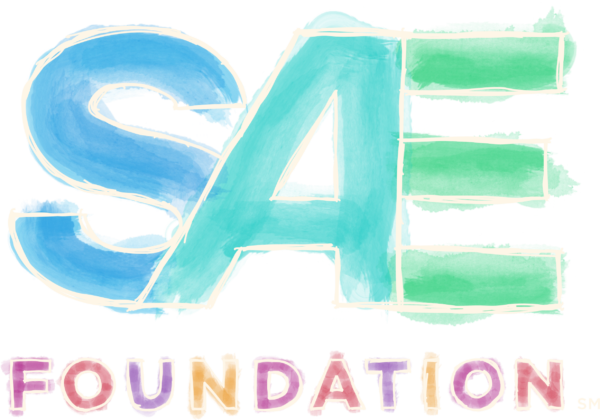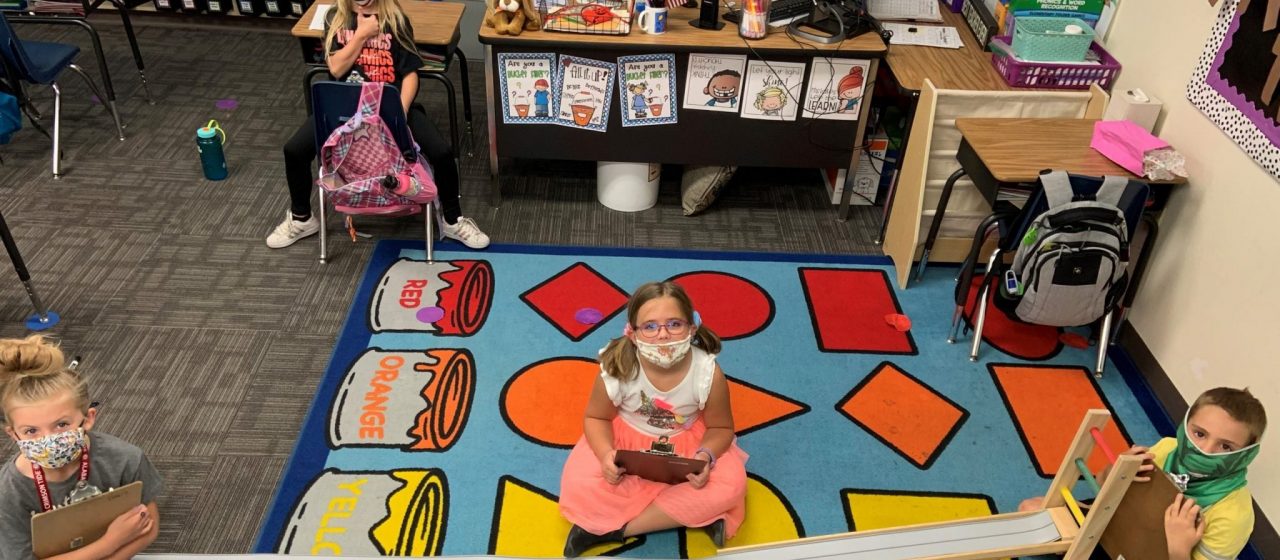AWIM Connects First Graders with Virtual Volunteers in Arizona
Sixteen first graders at Auxier Elementary School near Chandler, Arizona, spend most days stuck alone in their classroom with only their teacher. Like so many other virtual and in-person students, they’ve been isolated from other classmates and outside contact because of COVID-19.
When in-person volunteering was eliminated at Auxier, first grade teacher Maureen Alger had to find a way to quickly adapt the SAE A World In Motion® (AWIM®) Rolling Things STEM challenge to incorporate outside perspectives. Industry volunteers are crucial for young learners participating in AWIM’s PreK-8 STEM education program. They provide mentorship, real-world insights, and expose students to different STEM career paths. During the pandemic, they also provided something else—social interaction with someone other than a teacher.

The moment the virtual volunteers, including SAE Member Don Robins and the other GM Alumni involved with the Sun Lakes Rotary, joined the class, students immediately lit up. They were so happy to have an outside connection that they hung on their every word. It also didn’t hurt that the volunteers previously worked in the automotive industry which made STEM immediately relatable.
“When they shared what they did, it was magical. All kids know cars even if they don’t know engineering. They can envision one of the volunteers building a car and understand it in a much more tangible way than someone working as an accountant for example,” said Alger.
Because volunteers weren’t able to be there in person, they weren’t able to participate in many of the hands-on components that make the AWIM program unique. However, they were still able to find a way to immediately add value by asking leading questions: What do you think is going to happen when we add more weight to the car? What can we do to make sure the car doesn’t tip over? Why do we need three trials instead of just one?
 Beyond the instructional component, the virtual volunteers also helped with social and emotional learning. The first graders had to think about how to interact with adults and also with someone they don’t know—vital skills both in and out of the classroom.
Beyond the instructional component, the virtual volunteers also helped with social and emotional learning. The first graders had to think about how to interact with adults and also with someone they don’t know—vital skills both in and out of the classroom.
As the virtual volunteers spoke, you could see the students soaking it all in–looking at the AWIM materials as they were processing what the volunteers were saying. It was obvious their brains were busy churning away.
“First grade is a pivotal time developmentally. As they move into second grade, math will be less hands-on and more paper and pencil. Students need to be able to translate what they’re doing through hands-on STEM activities to more mathematical concepts. This is where we lose students. Math can be intimidating. The AWIM experience really is the perfect transition between hands-on and pencil and paper,” Alger added.
COVID-19 interrupted classroom learning for millions of students. Thanks to teachers like Maureen and AWIM’s virtual volunteers, 16 first graders had a chance to experience a little bit of normalcy while learning about STEM (and cars) in a fun, hands-on way.

